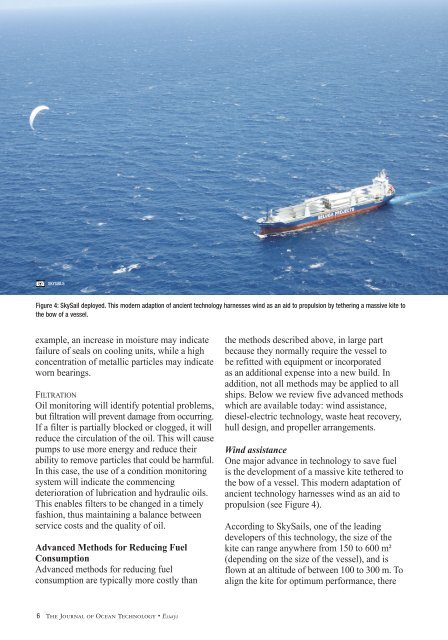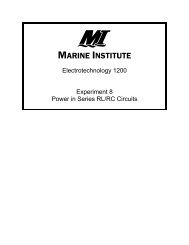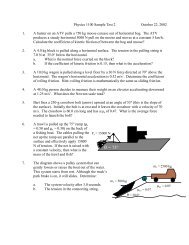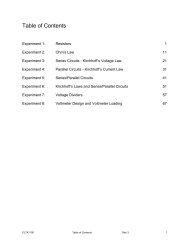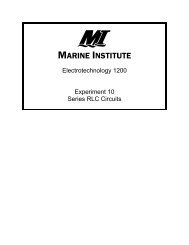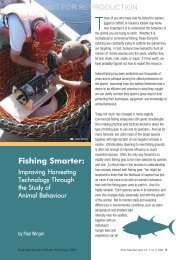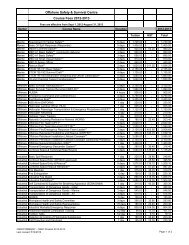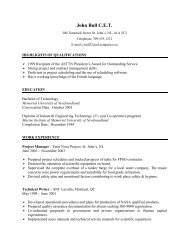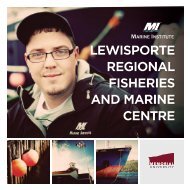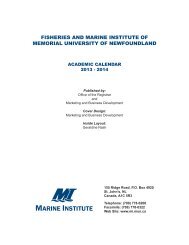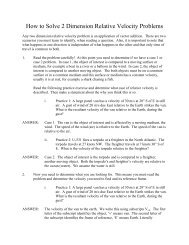Hybrid Marine Propulsion on the Tugboat Carolyn Dorothy
Hybrid Marine Propulsion on the Tugboat Carolyn Dorothy
Hybrid Marine Propulsion on the Tugboat Carolyn Dorothy
You also want an ePaper? Increase the reach of your titles
YUMPU automatically turns print PDFs into web optimized ePapers that Google loves.
skysails<br />
Figure 4: SkySail deployed. This modern adapti<strong>on</strong> of ancient technology harnesses wind as an aid to propulsi<strong>on</strong> by te<strong>the</strong>ring a massive kite to<br />
<strong>the</strong> bow of a vessel.<br />
example, an increase in moisture may indicate<br />
failure of seals <strong>on</strong> cooling units, while a high<br />
c<strong>on</strong>centrati<strong>on</strong> of metallic particles may indicate<br />
worn bearings.<br />
Filtrati<strong>on</strong><br />
Oil m<strong>on</strong>itoring will identify potential problems,<br />
but filtrati<strong>on</strong> will prevent damage from occurring.<br />
If a filter is partially blocked or clogged, it will<br />
reduce <strong>the</strong> circulati<strong>on</strong> of <strong>the</strong> oil. This will cause<br />
pumps to use more energy and reduce <strong>the</strong>ir<br />
ability to remove particles that could be harmful.<br />
In this case, <strong>the</strong> use of a c<strong>on</strong>diti<strong>on</strong> m<strong>on</strong>itoring<br />
system will indicate <strong>the</strong> commencing<br />
deteriorati<strong>on</strong> of lubricati<strong>on</strong> and hydraulic oils.<br />
This enables filters to be changed in a timely<br />
fashi<strong>on</strong>, thus maintaining a balance between<br />
service costs and <strong>the</strong> quality of oil.<br />
Advanced Methods for Reducing Fuel<br />
C<strong>on</strong>sumpti<strong>on</strong><br />
Advanced methods for reducing fuel<br />
c<strong>on</strong>sumpti<strong>on</strong> are typically more costly than<br />
<strong>the</strong> methods described above, in large part<br />
because <strong>the</strong>y normally require <strong>the</strong> vessel to<br />
be refitted with equipment or incorporated<br />
as an additi<strong>on</strong>al expense into a new build. In<br />
additi<strong>on</strong>, not all methods may be applied to all<br />
ships. Below we review five advanced methods<br />
which are available today: wind assistance,<br />
diesel-electric technology, waste heat recovery,<br />
hull design, and propeller arrangements.<br />
Wind assistance<br />
One major advance in technology to save fuel<br />
is <strong>the</strong> development of a massive kite te<strong>the</strong>red to<br />
<strong>the</strong> bow of a vessel. This modern adaptati<strong>on</strong> of<br />
ancient technology harnesses wind as an aid to<br />
propulsi<strong>on</strong> (see Figure 4).<br />
According to SkySails, <strong>on</strong>e of <strong>the</strong> leading<br />
developers of this technology, <strong>the</strong> size of <strong>the</strong><br />
kite can range anywhere from 150 to 600 m²<br />
(depending <strong>on</strong> <strong>the</strong> size of <strong>the</strong> vessel), and is<br />
flown at an altitude of between 100 to 300 m. To<br />
align <strong>the</strong> kite for optimum performance, <strong>the</strong>re<br />
6 The Journal of Ocean Technology • Essays


